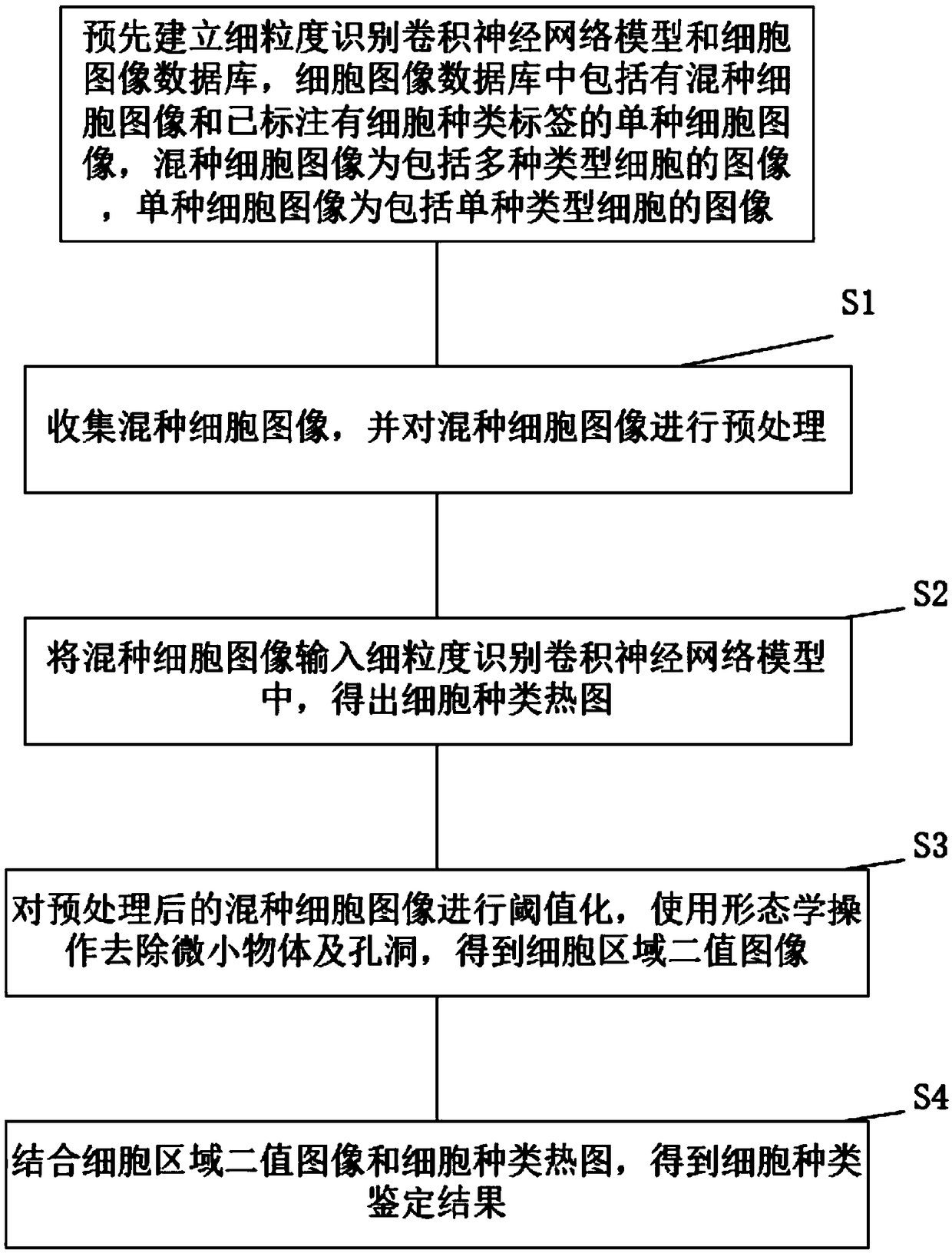Hybrid cell species identification method based on fine-grained recognition
An identification method and fine-grained technology, which is applied in the direction of character and pattern recognition, instruments, biological neural network models, etc., can solve the problems of cumbersome process and long time-consuming, achieve accurate results, avoid long time-consuming, and high recognition accuracy and the effect of robustness
- Summary
- Abstract
- Description
- Claims
- Application Information
AI Technical Summary
Problems solved by technology
Method used
Image
Examples
Embodiment Construction
[0034] In order to make the purpose, features and advantages of the patent of the present invention more obvious and understandable, the technical solutions in the patent of the present invention will be clearly and completely described below in conjunction with the accompanying drawings in the patent of the present invention. Obviously, the following description The embodiments are only some of the embodiments of the present invention, but not all of them. Based on the patent of the present invention, all other embodiments obtained by persons of ordinary skill in the art without making creative efforts belong to the protection scope of the patent of the present invention.
[0035] The present invention will be further described below in conjunction with accompanying drawing:
[0036] like figure 1 A method for identifying mixed cell types based on fine-grained identification includes the following steps:
[0037] The fine-grained recognition convolutional neural network mod...
PUM
 Login to View More
Login to View More Abstract
Description
Claims
Application Information
 Login to View More
Login to View More - R&D
- Intellectual Property
- Life Sciences
- Materials
- Tech Scout
- Unparalleled Data Quality
- Higher Quality Content
- 60% Fewer Hallucinations
Browse by: Latest US Patents, China's latest patents, Technical Efficacy Thesaurus, Application Domain, Technology Topic, Popular Technical Reports.
© 2025 PatSnap. All rights reserved.Legal|Privacy policy|Modern Slavery Act Transparency Statement|Sitemap|About US| Contact US: help@patsnap.com



